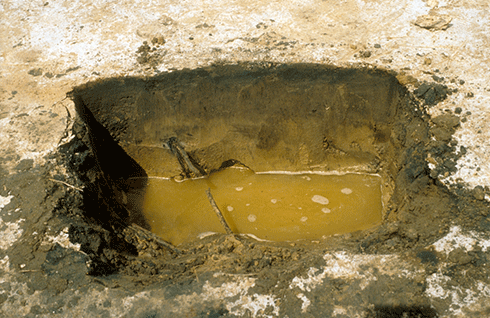
|
Published: 5 August 2013
Groundwater warming a clue to surface inflow rates
Water scientists are using heat to measure the extent to which some of Australia’s inland rivers and streams could dry up due to over-extraction of groundwater.
During the Millennium Drought a number of rivers and streams in the Murray-Darling Basin dried up partly as a result of over-extraction from the aquifers that normally keep them flowing.
In a bid to understand the problem better and to help federal and state water managers secure our water supplies, researchers at the National Centre for Groundwater Research and Training (NCGRT) are measuring water temperature above and below the surface.
‘By measuring the rate at which warmer water from the surface trickles into the cooler water below ground we can gain an idea of how quickly or slowly an aquifer is being recharged,’ says Dr Martin Andersen of NCGRT and the University of NSW.
‘We’ve installed data loggers at various points in the Murray-Darling Basin both above and below ground, which are recording temperature changes throughout the day, allowing us much greater insight into the movement of water between streams and underground aquifers.
‘By leaving these loggers in place for long periods of time, we can collect data over many years. This not only helps us build up a consistent picture of water flow in a given area but also means that we can monitor how groundwater levels recharge during floods,’ says Dr Andersen.
‘All this data provides us with much needed information about the connection and flow between different water sources. We can then use it to test, and improve, our models which show how one water source is linked to another and predict whether they will increase or decline.
‘It is estimated that around 95 per cent of Australia’s total freshwater supplies are underground. Unlike a surface dam, there are no easy ways to observe the movement and renewability of this water.’
NCGRT managing director, Prof. Craig Simmons says that the overall picture of groundwater usage in Australia has only become clear in recent years since the introduction of the National Water Initiative.
‘If not properly managed, increasing groundwater extraction poses a long-term risk as we generally do not know what effect its removal will have on watercourses at the surface, such as streams and rivers.
‘In order to manage this risk we need to understand how withdrawing water from one area, will affect a water source in another.
‘Using heat to trace water movement is one important method that we have at our disposal to better understand and manage catchment areas such as the Murray-Darling Basin that provide critical sources of water to communities, businesses and ecosystems throughout Australia.’
Source: SciNews/National Centre for Groundwater Research & Training




